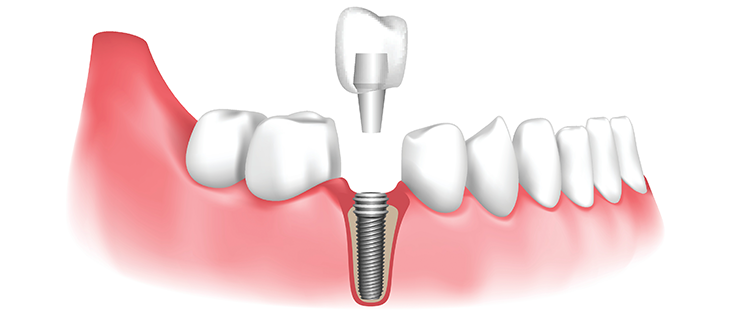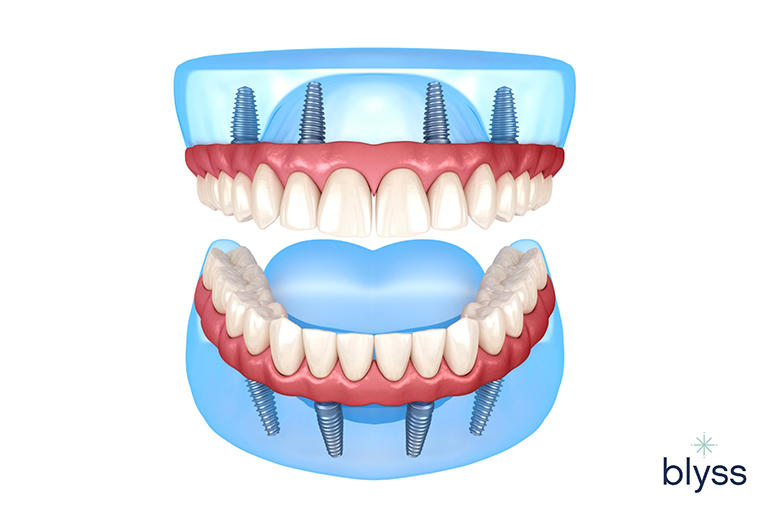Getting The Dental Sense To Work
Getting The Dental Sense To Work
Blog Article
About Dental Sense
Table of ContentsAll About Dental SenseAll about Dental SenseWhat Does Dental Sense Do?See This Report about Dental Sense
are medical gadgets operatively implanted right into the jaw to restore an individual's capacity to eat or their look. They offer support for man-made (phony) teeth, such as crowns, bridges, or dentures. When a tooth is lost as a result of injury or illness, an individual can experience issues such as fast bone loss, faulty speech, or adjustments to eating patterns that cause discomfort.Oral implant systems include an oral implant body and oral implant abutment and might likewise include an abutment addiction screw. Dental implants. The dental implant body is surgically inserted in the jawbone instead of the tooth's root. The oral implant abutment is generally connected to the dental implant body by the abutment addiction screw and prolongs through periodontals into the mouth to sustain the affixed synthetic teeth
(https://dental-sense-48874067.hubspotpagebuilder.com/dental-sense/dental-veneers-cost-kids-dental-and-dental-implant-vs-bridge-everything-you-need-to-know)Framework of The Oral Implant System selecting dental implants, speak with your dental company concerning the possible benefits and risks, and whether you are a prospect for the procedure. Things to consider: Your overall health is a crucial variable in identifying whether you are a great prospect for oral implants, for how long it will certainly take to heal, and just how long the dental implant may remain in area.
Smoking cigarettes might affect the recovery process and decrease the long-term success of the dental implant. The healing procedure for the implant body may take several months or longer, throughout which time you usually have a short-lived joint in area of the tooth. the dental implant treatment: Thoroughly adhere to the dental health instructions offered to you by your dental copyright.
Not known Details About Dental Sense
Implant failing can lead to the need for another procedure to fix or change the implant system. Brings back the capability to chew Restores cosmetic look Aids maintain the jawbone from reducing due to bone loss Maintains the wellness of the bordering bone and gum tissues Helps keep adjacent (close-by) teeth stable Improves lifestyle Damage to surrounding natural teeth throughout implant positioning Injury to the surrounding cells during surgery, such as sinus perforation Injury throughout surgical treatment (for instance, fracture of bordering jawbone) Poor feature, such as seeming like the teeth do not attack with each other generally A feeling that the tooth hangs or turning in location arising from a joint screw loosening Implant body failing (looseness of the dental implant body) as a result of systemic infection, which may be most likely in patients with uncontrolled diabetes because of local infection in bone and gums supporting the implant body because of delayed recovery, which may be more probable in patients that visit the site smoke Difficulty cleaning up the gums around the implant, causing inadequate oral health Without treatment gum illness Post-surgical pins and needles due to nerve impingement or damage Constantly notify health and wellness treatment providers and imaging service technicians that you have oral implants before any type of magnetic resonance imaging (MRI) or x-ray procedures.
FDA is not knowledgeable about any kind of damaging occasions reported for MRI or x-ray procedures with oral implants. Dental implants systems are usually constructed from materials that follow international consensus requirements of the International Organization for Standardization (ISO) or ASTM International. These requirements have details of what makes a safe material.

A dental implant is a framework that replaces a missing tooth. With screw-like tools, the cosmetic surgeon inserts a dental implant into the jawbone, and it works as a support for a fabricated tooth, called a crown. A tool called a joint links the fabricated tooth to the dental implant. The crown is personalized to fit the individual's mouth and match the shade of their teeth.
Dental Sense Can Be Fun For Everyone
Some people are not eligible for dental implant surgical treatment. It is for oral surgeons to operate individuals with: intense illnessuncontrollable metabolic diseasebone or soft tissue disease or infectionIf these problems are solved, an individual can have the surgical treatment. In, oral cosmetic surgeons abstain from operating on people with: If individuals with any one of the above undergo dental implant surgery, there is a greater threat of the dental implant falling short.

Dental dental implant surgical procedure is a customized procedure. Offer you time to heal. Affix the post and last crown, bridge or denture.
Next, your cosmetic surgeon will carefully place the dental implant right into your jaw. Your doctor will certainly reposition your periodontals and shut the laceration with stitches. If your dental implant is near the front of your mouth, your dental practitioner will certainly make a short-term tooth for you to use until you recover. That method, you will not have a gap in your smile while you recoup.
The Dental Sense Ideas
During the recovery phase, your jawbone must fuse to the dental implant. This procedure can take anywhere from 3 to 9 months.
When your dental implant heals, your dental practitioner can connect the abutment (tiny port message) and your last restoration (crown, bridge or denture). This usually takes about one hour to finish and may call for a second minor surgical treatment. You should not feel any kind of discomfort throughout your dental implant procedure since your company will certainly utilize medicine to numb your gum tissues.
Report this page